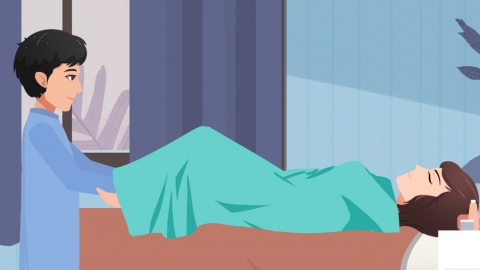How can uterine prolapse be pushed back in?
Generally, uterine prolapse can be managed through pelvic floor muscle exercises, pessary therapy, medication, surgical treatment, and traditional Chinese medicine approaches to aid recovery. Detailed explanations are as follows:
1. Pelvic Floor Muscle Exercises
This method primarily involves actively contracting the pelvic floor muscles to enhance muscle strength and elasticity, thereby improving the function of the pelvic floor supportive structures. A common technique is Kegel exercises, where patients consciously contract the muscles around the anus and vagina, hold the contraction for several seconds, and then relax, repeating the process. Long-term adherence can improve the pelvic floor muscle support for the uterus, alleviating the degree of uterine prolapse, and is suitable for patients with mild prolapse.

2. Pessary Therapy
A pessary is a supportive device inserted into the vagina that physically supports the uterus, maintaining it in its normal position and relieving discomfort caused by prolapse. The correct size should be selected, and insertion and removal must be performed under a physician's guidance. Regular cleaning and maintenance are necessary. This non-surgical method is suitable for older or frail patients who are not currently suitable candidates for surgery and can temporarily relieve symptoms.
3. Medication
Patients may follow medical advice to use medications such as Buzhong Yiqi Pills, Huangqi Granules, Fukang Tablets, etc., to improve symptoms. These medications typically have functions of strengthening the middle jiao (spleen and stomach), uplifting Qi, and lifting prolapsed organs. They help regulate bodily functions, enhance the tension of pelvic floor tissues, and assist in improving mild symptoms of uterine prolapse, creating favorable conditions for further recovery.
4. Surgical Treatment
Surgery addresses uterine prolapse by repairing the pelvic floor supportive structures or removing the uterus. Common procedures include pelvic floor reconstruction and hysterectomy. Physicians will develop individualized plans based on the patient's age, severity of prolapse, and reproductive needs. Surgery directly restores the position of the uterus and strengthens pelvic floor support, making it suitable for patients with moderate to severe prolapse or those who have not responded well to other treatments.
5. Traditional Chinese Medicine (TCM)
According to TCM theory, uterine prolapse is often associated with Qi deficiency with sinking Qi and kidney deficiency with instability. Treatment typically involves herbal medicines that strengthen Qi and uplift prolapsed organs or tonify the kidneys to secure the uterus, such as Renshen Jianpi Pills and Jinkui Shenqi Pills. Additionally, acupuncture can regulate Qi and blood circulation by stimulating specific acupoints, thereby enhancing pelvic floor tissue function. It can provide some relief for mild symptoms of uterine prolapse and help restore bodily balance.
In addition, patients should avoid heavy physical labor and chronic coughing, which increase abdominal pressure, manage body weight, and reduce the risk of worsening prolapse. Regular follow-up visits are necessary during treatment, and if symptoms worsen or unusual discomfort occurs, timely medical consultation is required to adjust the treatment plan.





